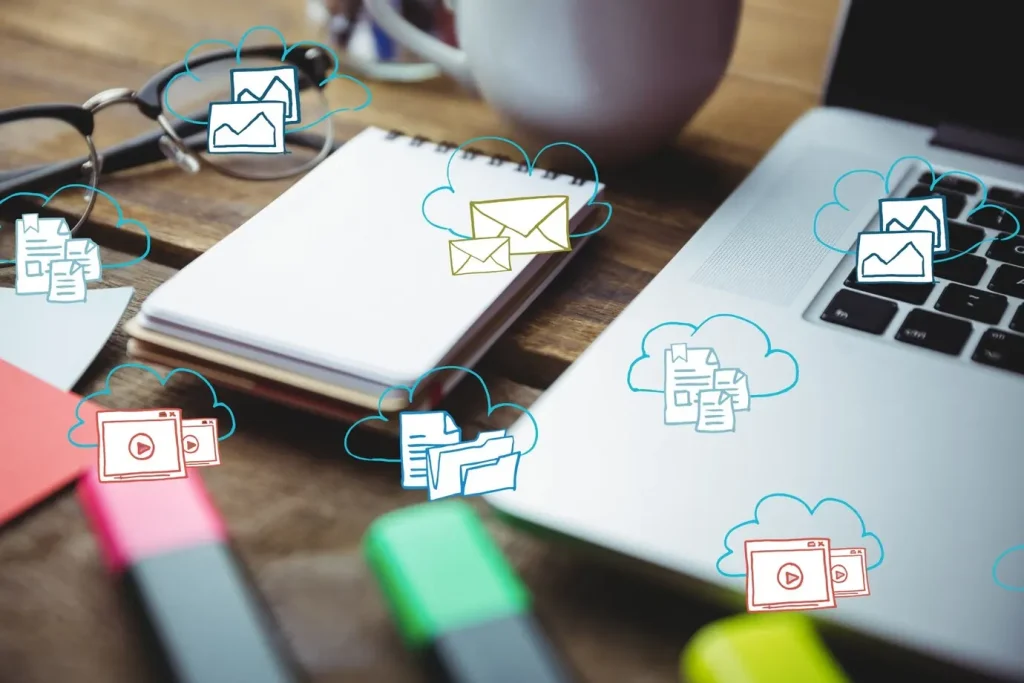For many business owners, email marketing might seem like a relic of the past. Social media and flashy new marketing tools grab all the headlines, but email remains a powerful and cost-effective way to connect with your audience and drive results. The key is crafting high-performance email marketing campaigns that resonate with your subscribers and land squarely in their inboxes, not their junk folders.
In this guide, I’ll be taking you on a deep dive into the world of email marketing. We’ll explore essential strategies for planning, crafting, and optimizing your campaigns to ensure they deliver a return on investment.

Campaign Strategy & Planning: Building a Foundation for Success
Before you hit “send,” it’s crucial to lay the groundwork for a successful email marketing campaign. Here’s where we’ll focus on building your audience and defining your goals.
Building Your Audience: The Power of Segmentation and Targeting
Your email list is your most valuable asset. But simply collecting email addresses isn’t enough. We want to ensure we’re reaching the right people with the right message. This is where segmentation and targeting come in.
Segmentation involves dividing your email list into smaller groups based on shared characteristics. These characteristics could be demographics (age, location), interests (specific products or services), or behaviour (past purchases, website visits).
Let’s say you run a local bakery. You could segment your list by location to send targeted emails about upcoming sales at specific branches. Or, you could segment by purchase history, sending emails with special offers on birthday cakes to customers who have previously purchased one.
By tailoring your emails to specific segments, you’ll create a more relevant and engaging experience for your subscribers, ultimately leading to higher open rates and click-through rates.

Defining Campaign Goals: Setting SMART Objectives
Now that you understand your audience, it’s time to define what you want to achieve with your email marketing campaigns. Setting clear goals is essential for measuring success and ensuring your campaigns are aligned with your overall marketing strategy.
Here’s where the SMART framework comes in handy. SMART goals are Specific, Measurable, Achievable, Relevant, and Time-Bound. For example, a SMART goal for an email campaign might be to increase website traffic from email clicks by 20% within the next quarter.
By setting SMART goals, you’ll have a clear direction for your campaigns and be able to track your progress effectively.
Planning & Structuring Campaigns: Harnessing the Power of Automation
Once you’ve built your audience and defined your goals, it’s time to start planning your email campaigns. This includes structuring your emails, crafting compelling copy, and utilising email campaign management tools.
Many businesses find success with automated email workflows. These are pre-designed sequences of emails triggered by specific subscriber actions. For instance, a welcome series might be automatically sent to new subscribers, providing them with information about your brand and special offers. Abandoned cart emails can be triggered when a customer leaves items in their online shopping cart without completing the purchase.
By utilising these automated workflows, you can nurture leads, re-engage inactive subscribers, and drive conversions more efficiently.
Content & Design Essentials: Creating Emails that Captivate
Now that you have a solid plan in place, let’s turn our attention to the content and design of your emails. After all, this is what will ultimately determine whether your subscribers open your emails and take action.
Crafting Compelling Email Copy: Subject Lines, Body Content & CTAs
Your email subject line is your first impression. It needs to be clear, concise, and grab the reader’s attention. Think of it as a headline in a newspaper – it should entice them to open the email and learn more.
Once they’ve opened your email, the body content needs to be engaging and informative. Here are some tips:
- Keep it concise and scannable. People are busy, so get straight to the point and use clear formatting with bullet points and short paragraphs.
- Focus on the benefits. Explain how your product or service will solve their problem or improve their lives.
- Tell a story. People connect with stories, so use storytelling techniques to make your email more memorable.
- End with a strong call to action (CTA). Tell your subscribers what you want them to do next, whether it’s visiting your website, making a purchase, or downloading a free resource.
Subtle Integration:
Take a business like Optima Cleaner Australia, for instance. They have an experienced rug cleaning team that specialise in carpet cleaning, a service most homeowners need periodically. An email campaign could target past customers, reminding them of the importance of regular carpet cleaning for maintaining a healthy home environment, while subtly suggesting they schedule their next service through a clear CTA button.

The Power of Personalization: Tailoring Your Message for Maximum Impact
We’ve already discussed segmentation, but personalization takes things a step further. Personalization involves using subscriber data to tailor the content of your emails to individual recipients. This could include using their name in the subject line, mentioning their past purchases in the body content, or recommending products based on their interests.
Personalization creates a more relevant and engaging experience for subscribers, leading to higher open rates, click-through rates, and conversions. Here are some ways you can personalize your emails:
- Use subscriber names. A simple salutation with the subscriber’s name can make a big difference.
- Segment your list based on purchase history. Send targeted emails with product recommendations based on what they’ve bought in the past.
- Personalize your CTAs. Instead of a generic “Shop Now” button, use a CTA that’s relevant to the subscriber’s interests (e.g., “Get Your Free Carpet Cleaning Quote”).
By incorporating personalization techniques, you can make your emails feel less like mass marketing blasts and more like one-on-one conversations with your subscribers.
Email Design Best Practices: Creating a Visually Appealing and User-Friendly Experience
The design of your emails is just as important as the content. Here are some key design best practices to keep in mind:
- Keep it mobile-friendly. The majority of people check their emails on mobile devices, so ensure your emails are responsive and display correctly on all screen sizes.
- Use a clear and consistent layout. Make it easy for subscribers to scan your emails and find the information they’re looking for.
- Incorporate high-quality visuals. Images and videos can help break up text and make your emails more visually appealing.
- Use a professional design. A well-designed email will reflect positively on your brand.
By following these design best practices, you can create emails that are not only visually appealing but also user-friendly and easy to navigate.
Advanced Strategies & Optimization: Taking Your Email Marketing to the Next Level
Once you’ve mastered the basics, you can explore some advanced strategies to further optimize your email marketing campaigns.
Leveraging Data & Analytics: Measuring Performance and Making Informed Decisions
Data is your friend in email marketing. By tracking key metrics such as open rates, click-through rates, and conversion rates, you can gain valuable insights into how your campaigns are performing.
Use this data to identify what’s working and what’s not. A/B test different subject lines, email content, and CTAs to see what gets the best results. Continuously refine your campaigns based on your data to improve performance over time.
Email Automation Workflows for Specific Industries
While the core principles of email marketing remain the same across industries, specific strategies can be tailored to different businesses. For instance, an e-commerce store might use automated welcome series emails to introduce new subscribers to their products and offer them a discount code. A travel agency could send automated email sequences with flight deals and itinerary confirmations.
By understanding the unique needs of your industry, you can develop targeted email automation workflows that resonate with your audience and drive results.
Re-engagement & Win-Back Strategies: Reconnecting with Inactive Subscribers
It’s natural for some subscribers to become inactive over time. But don’t give up on them just yet! There are strategies you can use to re-engage inactive subscribers and win them back.
- Send re-engagement campaigns. These campaigns might offer exclusive discounts or remind subscribers about the benefits of your products or services.
- Segment your inactive list. Segment your inactive subscribers based on how long they’ve been inactive and tailor your re-engagement campaigns accordingly.
- Offer them a chance to unsubscribe. It’s better to have a clean and engaged email list than a large list filled with inactive subscribers.
By implementing these re-engagement strategies, you can revive dormant subscribers and bring them back into the fold.
The Future of Email Marketing: Staying Ahead of the Curve
Email marketing is constantly evolving. Here are some emerging trends to keep an eye on:
- Interactive content: Emails with interactive elements like polls, quizzes, and product configurators can increase engagement and conversions.
- AI-powered personalization: Artificial intelligence can be used to personalize emails to an even greater degree, creating a highly individualized experience for subscribers.
- Voice-activated email interactions: With the rise of voice assistants like Alexa and Google Assistant, we might see the development of voice-activated email interactions in the future.
By staying informed about these trends, you can ensure your email marketing strategy remains relevant and effective in the years to come.
The Enduring Power of Email Marketing
In the age of social media and flashy new marketing tools, email marketing might seem old-fashioned. But don’t be fooled by the hype. Email remains a powerful and cost-effective way to connect with your audience, nurture leads, and drive sales.
By following the strategies outlined in this guide, you can craft high-performance email marketing campaigns that resonate with your subscribers and deliver real results for your business. Remember, email marketing is a marathon, not a sprint. Consistent effort, ongoing optimization, and a commitment to providing value to your audience will be key to your success.
So, don’t let your email marketing efforts gather dust in your inbox. Put these tips into practice and watch your email marketing campaigns blossom!



